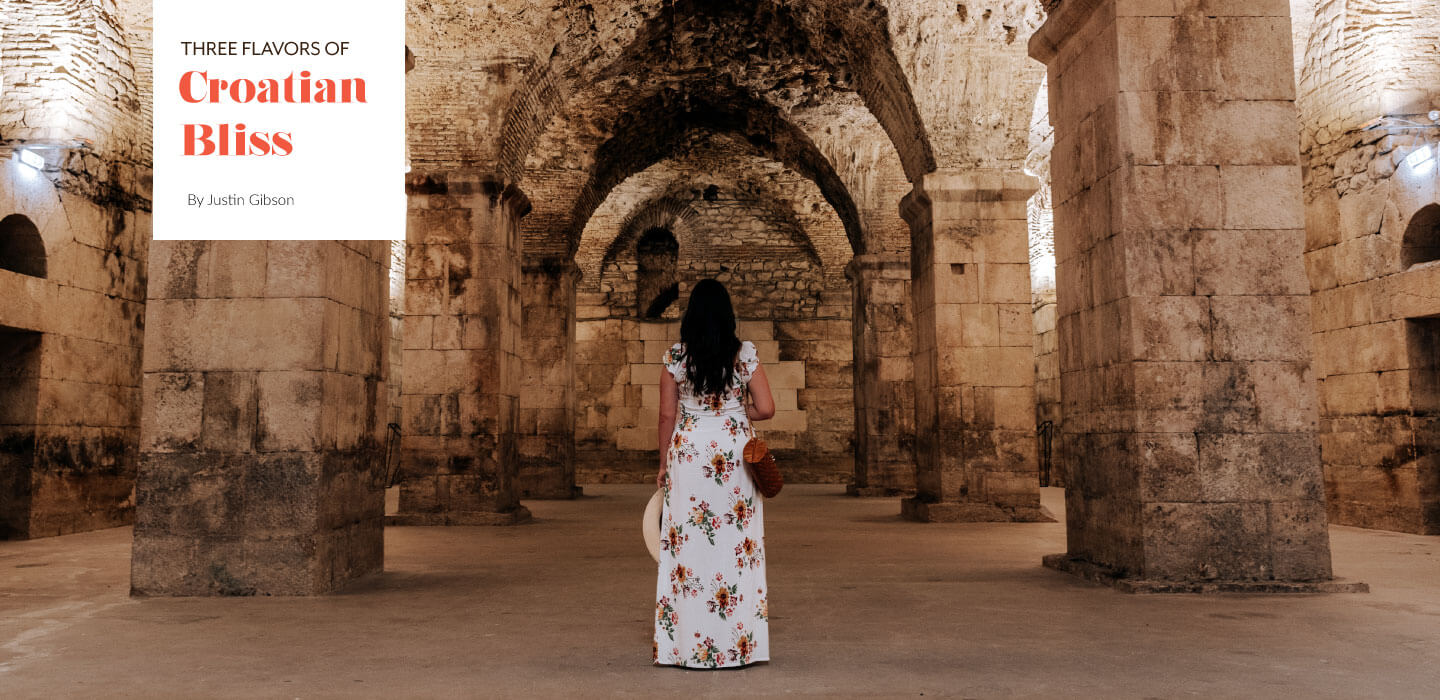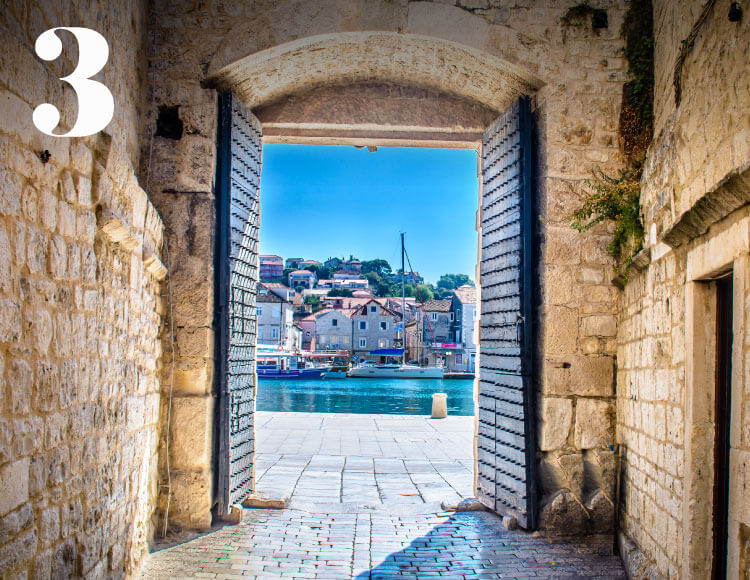Whether you’ve been studying the Habsburg Monarchy with post- doctorate fervor or you’re only passingly
familiar with it as the background of certain Game of Thrones episodes, the nation of Croatia commands dropped jaws and utter awe with its undeniable Old World charm. For most, the entirety of their Croatian adventure will transpire in the coastal city of Dubrovnik — and we can’t blame them; there’s a reason that Lord Byron affectionately deemed it the “Pearl of the Adriatic” — but in truth, there are at least three flavors of Croatian bliss to savor when having the journey of a lifetime here.



A Day in the Life in Dubrovnik
Dubrovnik is one of the most prominent tourist destinations of
the Mediterranean for good reason: The majestic Old City, the modern shopping boutiques and the endless views of the hypnotizing blue Adriatic all combine to create a city that is both classical and modern, a fairytale escape and cosmopolitan hub in the same breath. You’ll undoubtedly want to start your day exploring Old City; its Renaissance palaces and churches are a holdover from its wealthy trading route days. The Stradun (the main thoroughfare) hosts some of the main attractions — the Franciscan Church (a classically baroque monastery); the regal Sponza Palace (standing tall since circa 1500s); and the Rector’s Palace, once the proud seat of Ragusa’s government.
All this sightseeing is bound to work up an appetite, and Dubrovnik’s seafood is naturally top notch. Plenty of high-end options are scattered both inside and outside the old walls; black risotto and fresh oysters are the must-try dishes. Whether you spend the afternoon window-shopping at boutiques or people-watching from a café is up to you, but make sure to pause to watch the sun set over the Adriatic Sea.
There’s no wrong vantage point for this, but a particularly inspired spot is at the top of the cable car, looking down on Old City below — watching the sunset blanket the traditional red roofs makes for a striking contrast to the deep blue of the Adriatic.

Adriatic Island Hopping
Orbiting Croatia’s coastline is a constellation of islands; each offering its own flavor of paradise. There are several dozen to choose from, but a who’s-who of the ones worth visiting is as follows:
-
- The isle of Lokrum is a nature preserve just a 10-minute ferry ride from Dubrovnik. Austrian archduke Maximilian once holidayed on the island, and his monastery and botanical garden still stand to this day, for your exploring pleasure.
- The three Elaphiti Islands are an archipelago just northwest of Dubrovnik with serene shores and gentle bays providing an “away from it all” oasis that’s only 30 minutes by ferry.
- Considered Croatia’s greenest island, Mljet is downright enchanting. Legend has it Odysseus was held captive here for seven years; thanks to the clear water, quiet ambiance and picture-perfect landscapes, you can’t help but envy him a little for his prolonged stay. The national park on the western part of the island is a must, as is the local wine, olives and goat cheese.
-
- Korčula is another paradise isle; like Dubrovnik, it has a stunning Old City, filled with tourist-friendly spots to eat, drink and shop — but it also has hidden beaches, picturesque olive groves and is renowned for its white wine culture.
- The isle of Hvar has ascended to the status of luxury getaway; A-list celebrities have been known to park their yachts right offshore. Upscale hotels and trendy eateries are as abundant as seashells on its sun-kissed beaches, the vibrant bar scene as prominent as the scent of lavender across the rolling hills stretching through the interior.

Driving the Dalmation Coast
Croatia’s islands don’t hold sole domain over the country’s wanderlust-inducing escapes: The country’s modern highways open up a world of road-trip possibilities. Split is typically the first possibility most act on, as it’s only a four-hour drive from Dubrovnik, and a lively, bustling town in its own right. Rich with history, its museums can shed an insightful light onto Split’s past eras … but undoubtedly the real draw is the Roman Palace of Diocletian. Palace is something of a moniker — it’s really more of a small city. Constructed by the tyrannical emperor Diocletian around the year 305 A.D., much of the estate sits nearly unchanged in the modern age: The gates, Peristil Square, St. Domnius Cathedral and the Temple of Jupiter are all worthy of an exploratory stroll.
Further up the Dalmatian Coast sits Trogir, a UNESCO World Heritage Site. Seemingly cast in the Dubrovnik mold, the quaint town is lined with medieval walls, and only accessible across bridges from the mainland. Trogir is small — you could walk it from one end to the other quick enough, but it would actually take several hours if you stopped to admire all the
scenic views, Romanesque and Renaissance architecture and idyllic marble streets. In the summertime, you’ll find everyone drawn to the seaside promenade, frequenting the many picturesque bars and cafes.
As lovely as these towns may be, they’re only the destination — the journey is just as memorable. There is no train network in Croatia, only highways. But that’s not the sole reason everyone drives: Drivers here pass through some of the most beautiful scenery you could hope to find in Europe. Picture it — driving down the Jadranska magistrala, the legendary stretch of road that traces the jagged coastline of southern Dalmatia, wind in your hair, gorgeous views left and right, ahead and behind you — that’s a blissful moment indeed.